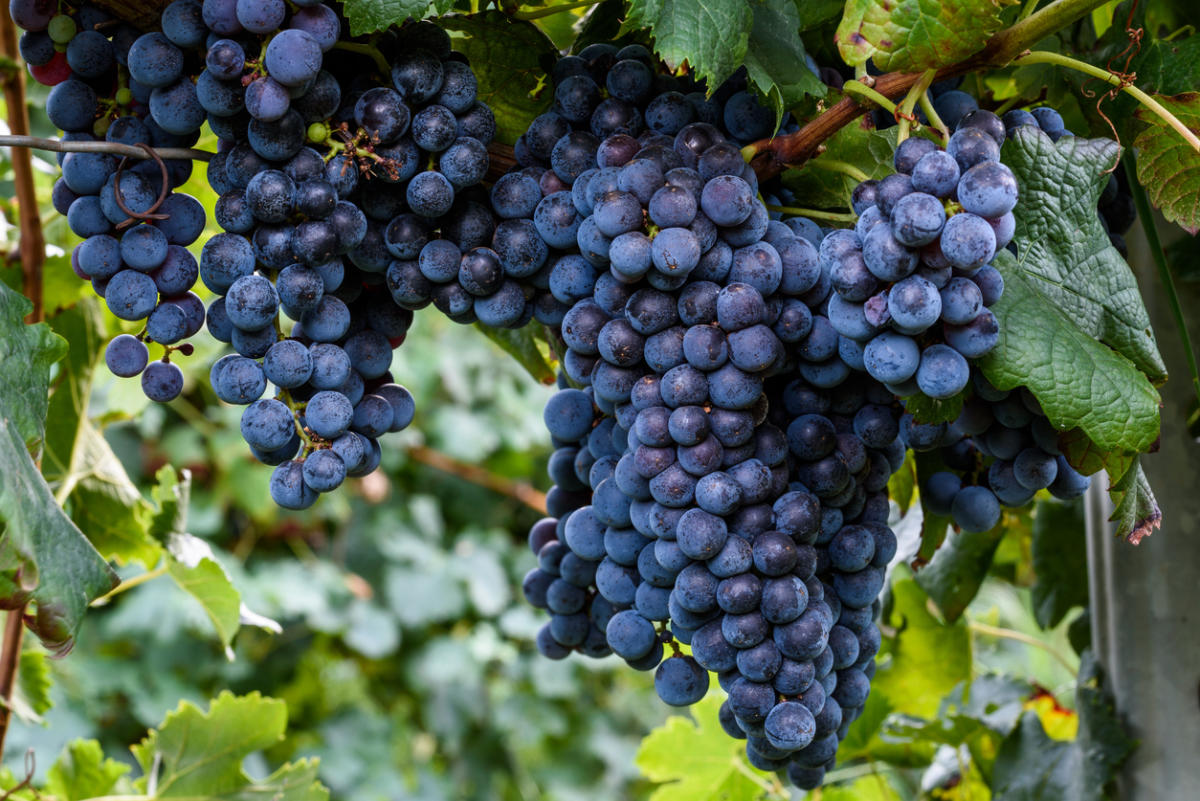Choosing the most attractive plants for a site is not so easy. All of them are striking in their beauty and splendor. However, there are those who certainly catch the eye. It is to such plants that Kalistegia belongs.
In this material, you will learn the intricacies of planting calistegia and the subsequent care of it. You will also see in the photo samples of some species of this plant.
Features of landing kalistegi multiplex
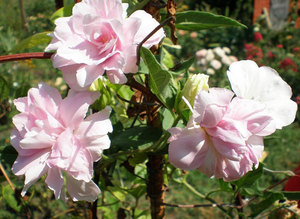 Many gardeners prefer to grow fluffy calistegia, belonging to the multiplex variety. Its key characteristics are: perennial climbing plant; the height can vary from 3 to 3.5 m; differs in frost resistance.
Many gardeners prefer to grow fluffy calistegia, belonging to the multiplex variety. Its key characteristics are: perennial climbing plant; the height can vary from 3 to 3.5 m; differs in frost resistance.
In the fall, the aerial part of the plant dies off, so it better to cut in autumn, leaving a small stump. Calistegia awakens in the middle zone only at the end of May, when the night frosts finally come to an end.
This is what saves the flower from them. Then, with proper care, rapid development begins, by mid-June the height of the plant can be about 1.5 meters, while a large number of buds grow.
The flowering of this type of calistegia lasts a very long time - from late June to late September. In the photo you can see what this flower looks like during flowering. The flowers are very large (about 9 cm in diameter), double, have iridescent pink shade and cover the plant from bottom to top. The only negative is that they have no smell.
If we talk about planting a calistegia of this type, then it unpretentious to soil... It takes root almost everywhere - both in the sun and in partial shade, it is not exposed to the negative effects of diseases and pests too often. Care consists in periodic loosening and feeding based on a solution of mullein and minerals.
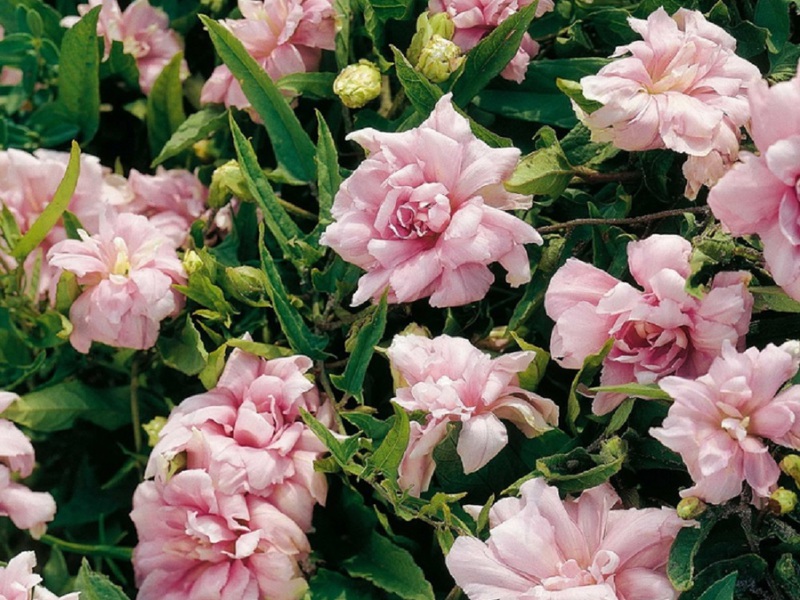
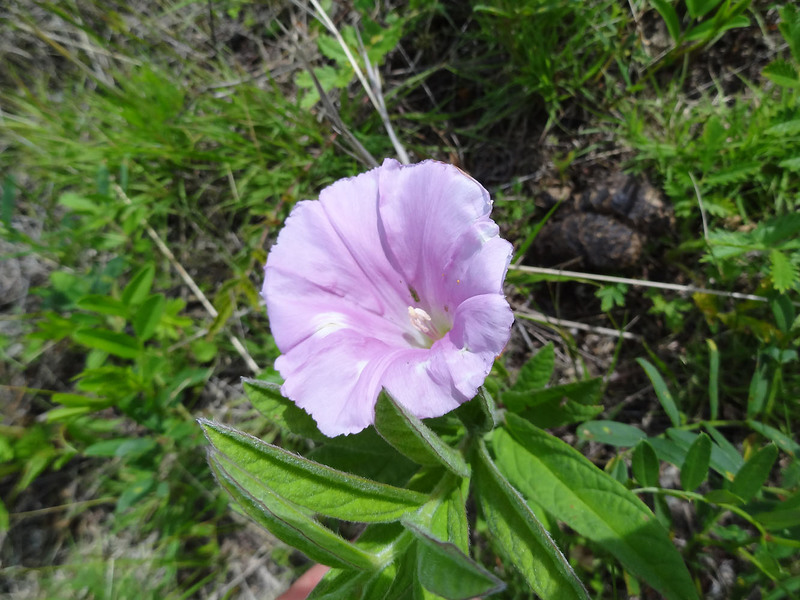


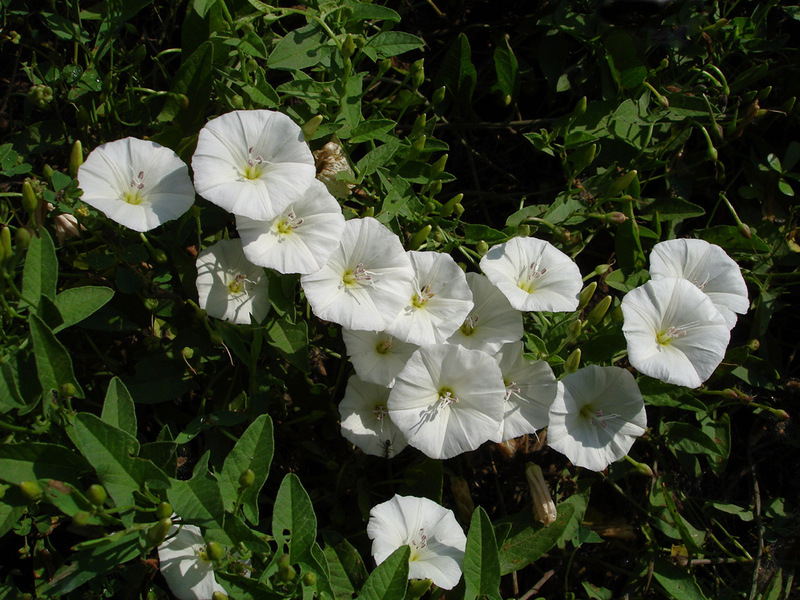
Kalistegia belongs to the category of bindweed plants. Exists many types of calistegiathat can grow in the temperate zone. In total, there are about 25 of them. The most common types and varieties are the following:
- Calistegia multiplex.
- Pink.
- Daurskaya with omitted leaves and others.
The name comes from the Greek language and literally means concepts such as “calyx "and" cover "... The flower has large bracts that cover its calyx. When planting, you should know that Kalistegia reproduces very simply:
- it forms white rhizomes;
- segments are transplanted in spring when the first shoots appear;
- with this planting, the plants grow up to 1.5 meters in the first year and bloom well.
Planting a pink calistegia
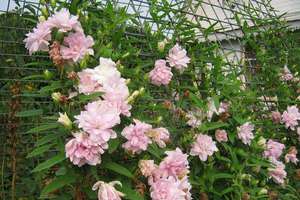 The pink calistegia is often called American. Its homeland is North America, but it also grows in the wild in Europe and East Asia.
The pink calistegia is often called American. Its homeland is North America, but it also grows in the wild in Europe and East Asia.
When landing you need to provide support: plant the plant next to the house or shed, then pull the rope so that it stretches.
Planting a plant is carried out in this way:
- We dig a plastic container without a bottom into the flowerbed.
- We pour fertile soil inside and add half a glass of ash, mineral fertilizer and humus.
- We plant calistegia in the middle.
In the first year after planting, about three tall stems grow.They must wrap around their support, which must also be provided.
Alternatively, it can be a water pipe with a small diameter. Then appear double pink flowers, in the second year there will be more. If the weather is mostly damp and cool, then their number may decrease.
Extremely Not recommended plant calistegia in open ground. Its roots develop at a tremendous speed, therefore, if this process is not controlled artificially, they would have filled the entire space, and then the plant became a potential aggressor of the site.
So that there is no need to transplant calistegia after a while with poor flowering, it is better for him to immediately choose a container without a large bottom. For example, an old barrel, which you can not dig too deep.
Plant transplant
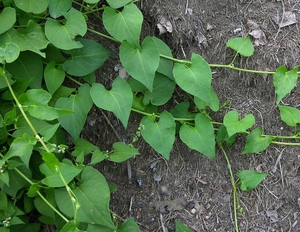 If there are problems with flowering in the second or third year after planting, then you can transplant the calistegia. This is done as follows: we dig a bucket out of the ground and shake out all the contents from it.
If there are problems with flowering in the second or third year after planting, then you can transplant the calistegia. This is done as follows: we dig a bucket out of the ground and shake out all the contents from it.
The condition of the roots can be in a deplorable state and be direct culprit for poor bloomI. So, the roots may not go deep in search of food, and it became too crowded for them. Accordingly, there was not enough food for the full flowering of the plant.
It is best to replant and plant calistegia in the spring. Several more rhizomes can be transplanted into the same bucket or barrel, and renew the soil... In a new place and on a new support, as a rule, the plant blooms much better and more abundantly.
So that the stems can twist well individually, make several thick nylon ropes and tie them to a metal or wood support. So, each stem will have its own rope.
The higher the support, the the plant will rise higher, which tends to rise up to 4 meters. When blooming, there is only one double flower in the axil of the leaf, but they are in the axil of each leaf. Each flower blooms for only a few days, this is the only drawback of calistegia.
In cold weather, flowering will last longer than in heat. In a sunny place, flowering begins at the end of June, and in the shade - a month later. This period can continue until frost.
Care: feeding and disease prevention
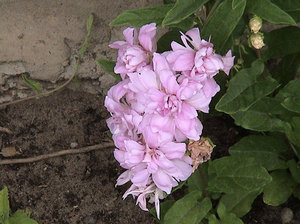 American Calistegy does not need much maintenance. In the spring, for better growth, you need it fertilize with minerals... Fertilizer of this type is best used on a regular basis every 10 days.
American Calistegy does not need much maintenance. In the spring, for better growth, you need it fertilize with minerals... Fertilizer of this type is best used on a regular basis every 10 days.
Before the flowering period, it is better to feed the plant manure solution, and then again in his time. Watering the plant is carried out as needed. In the confined space of buckets and barrels, moisture is retained for a relatively long time, so frequent watering is also not needed.
The most dangerous pests for calistegia are slugs and snails, which can spoil the appearance of the plant. They make holes in the leaves and eat the buds. Therefore, it is better to plant it in the sun. You can get rid of pests by spraying the plant with preparations "Commander "and" Confidor».
As for diseases, calistegia is subject to rot and powdery mildew. The latter often appears on the leaves when the weather is cold and damp in summer. For the prevention of diseases plant treated with fungicide, for example, "Fitosporin" or sprayed with a solution of "Topaz".
As for winter care, an adult plant does not need to be specially covered for the winter. In the cold season, the shoots die off, and in early spring they grow back and begin to twine around the vertical supports.
Kalistegia is an excellent plant for vertical landscaping of objects such as:
- Benches.
- Gazebos.
- Arches.
It is good because, unlike other climbing plants, it does not form impassable and dense thickets, but simply attracts attention.
Calistegia of different types and varieties will become a great addition flower and plant complex in a country garden or city park.


